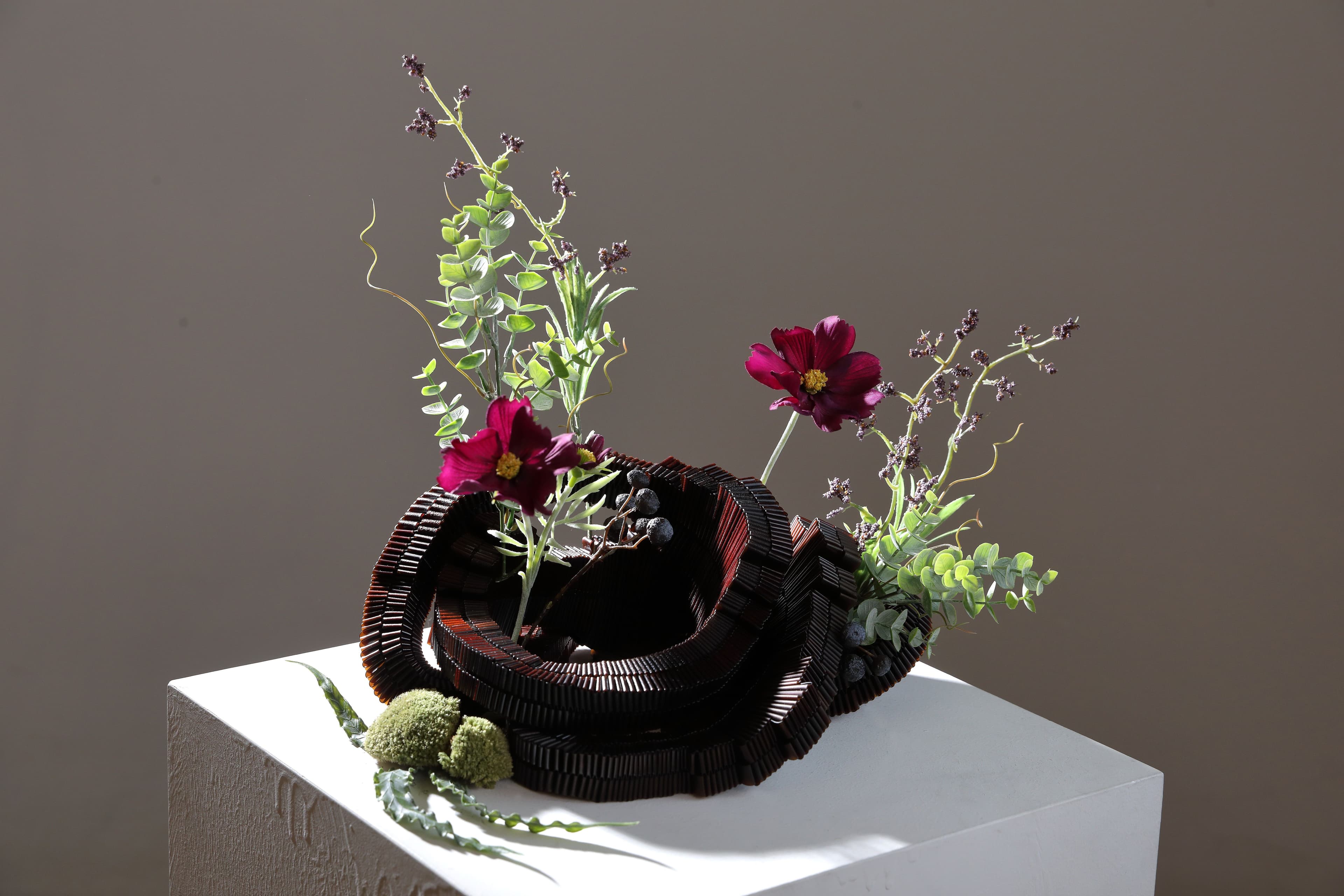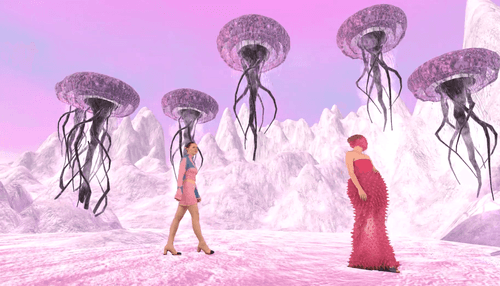What initially inspired you to explore bio-based materials?
During my undergraduate and master’s degrees in space design, I was interested in the environment and worked on many related projects. Particularly during my master's, I designed a water purification restaurant utilising the properties of seaweed, which became the starting point that led to further research into materials using seaweed.

Can you elaborate on the process of developing bio-based materials from algae? What are the unique properties that make algae an ideal material for such applications?
I have been researching the material for years to achieve its current texture and colour. The research led to minimising the use of chemical raw materials and using only 100% biodegradable raw materials. The material has properties similar to leather and displays high elasticity and flexibility when folded. Additionally, the material also has translucent properties.
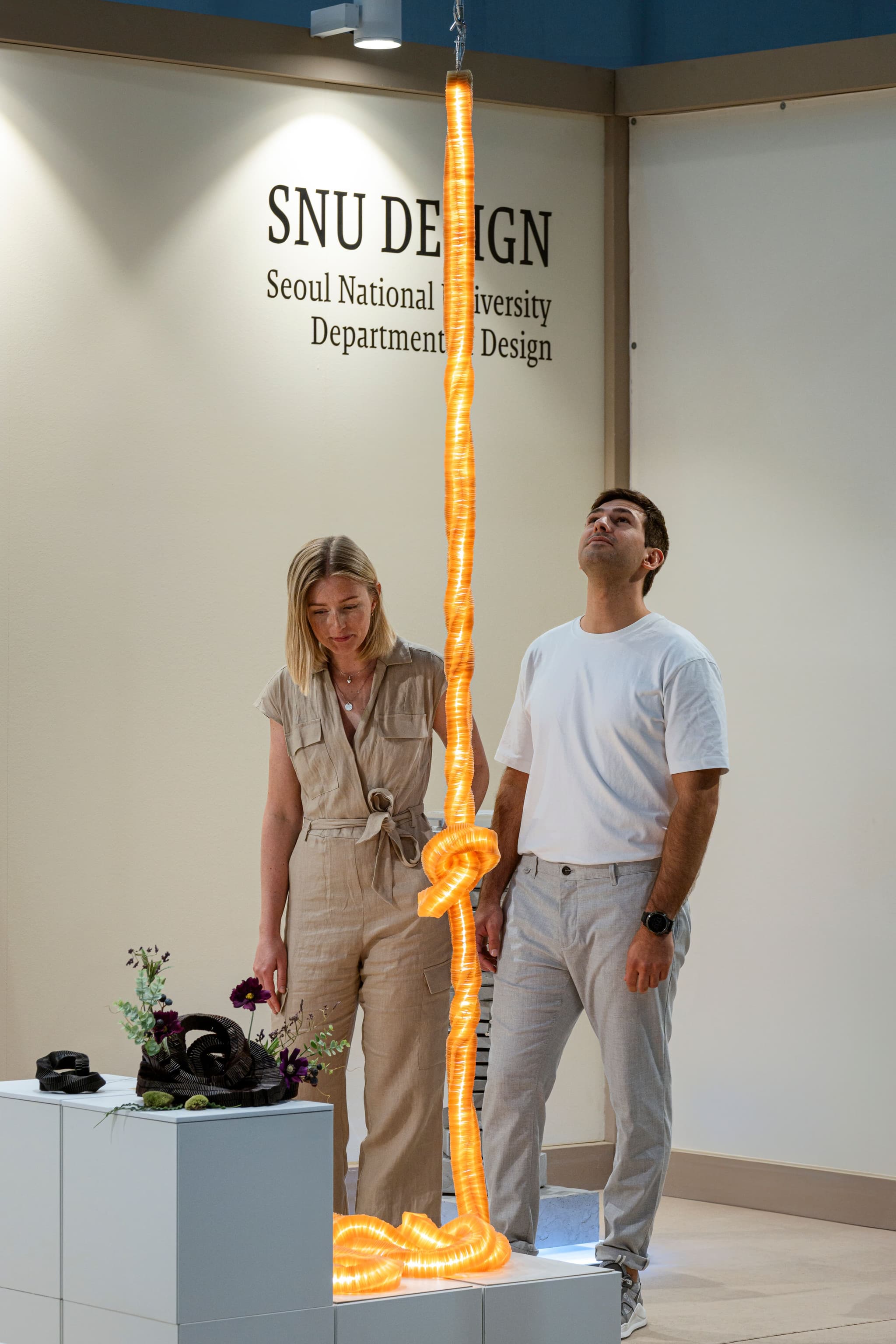
Your work incorporates traditional Korean knotting techniques. How do you blend these practices with modern design principles in your creations?
The inspiration for my design came from a national treasure in Korea, the ten-story stone pagoda at Gyeongcheonsa Temple site (경천사지 십층석탑). Inspired by this building, I studied traditional Korean knotting techniques and conducted various experimental forms. This process enabled me to complete the current form, which also resembles the weave pattern of Scoobies that was popular during my childhood.
While I drew inspiration from the architectural style of traditional buildings and utilised traditional methods in my production, I did not seek to reinterpret the final design forms in a contemporary way. Instead, I focused on experimenting with the elasticity and flexibility of the materials, and I believe it is appropriate to view the outcome of this work as the result of these material-focused explorations.
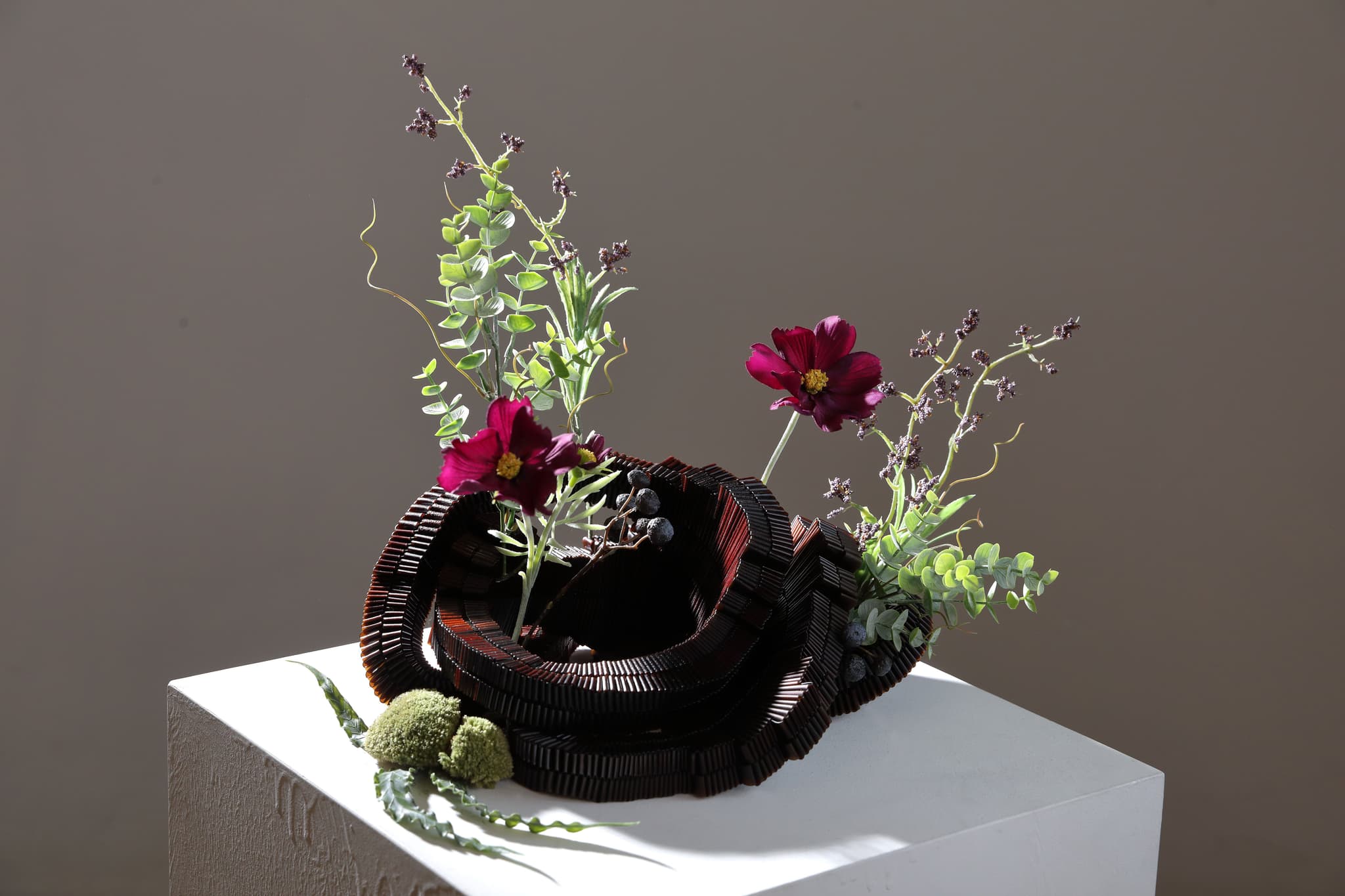
How did your experience running a coffee shop influence your decision to utilise coffee waste in your materials? What challenges did you face in this transformation process?
The first thing I utilised for the colour of the material was coffee. When I worked at a coffee shop in the past, I felt guilty about the environmental impact due to the large amount of coffee waste. Therefore, I encouraged regular customers to use some of the coffee grounds as fertiliser for plants or as an exfoliating skin care product by distributing it to them. Even after I quit the cafe, I continued to drink hand-dripped coffee daily at home. The amount of coffee waste produced at home every day was also substantial. This led me to apply it to the materials for recycling purposes.
Coffee was more challenging to tackle than other raw materials used for achieving different colours. This was because there was often a blend of various types of coffee beans, which resulted in uneven colour extraction. Therefore, I continuously conducted experiments to achieve a more uniform colour.
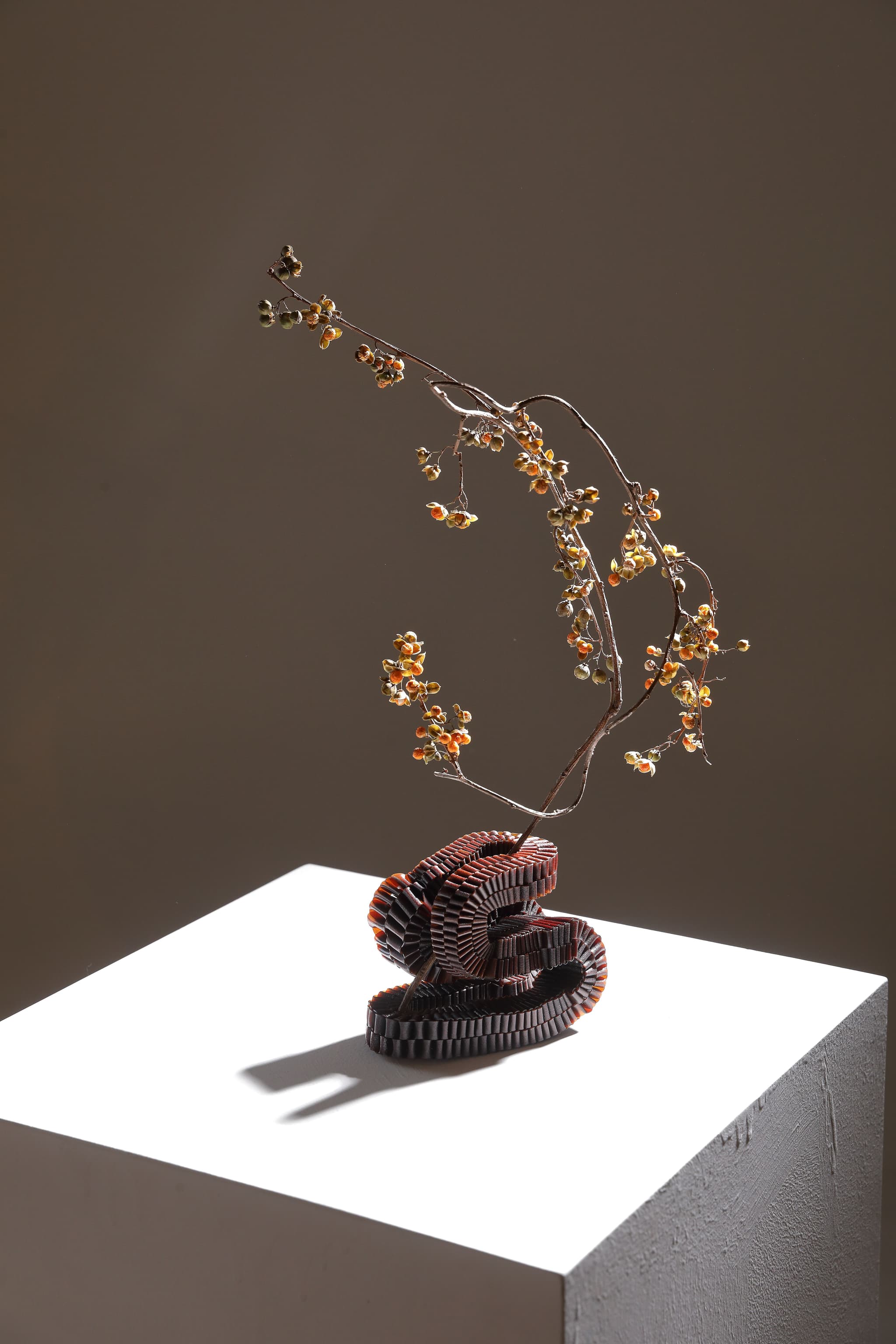
What are some of the biggest challenges you face when working with biodegradable materials, especially in terms of durability and consumer acceptance?
The challenges involve biodegradable material’s sensitivity to temperature and humidity. To achieve optimal performance, it is important to avoid high temperatures and excessive moisture when using biodegradable materials, much like leather.
Additionally, the base of biodegradable materials seaweed can result in a distinct odour, leading to sensitivity among consumers who are particular about smells.

How does the concept of sustainability influence your overall design philosophy and creative process?
I believe that as creators of consumer goods, industrial designers inevitably impact the environment. Currently, the industry exhibits a pattern of excessively consuming unnecessary items, using products for a much shorter duration than their actual life cycle.
My research was not aimed at changing this consumer behaviour but rather at finding materials suitable for such consumption patterns.

What is the next material research you’d love to explore for Studio Su Yang Choi?
I plan to continue experimenting with biodegradable materials to enhance their durability, aiming to achieve a level of resilience comparable to industrial materials. The next step will focus on developing water-resistant biodegradable materials.
